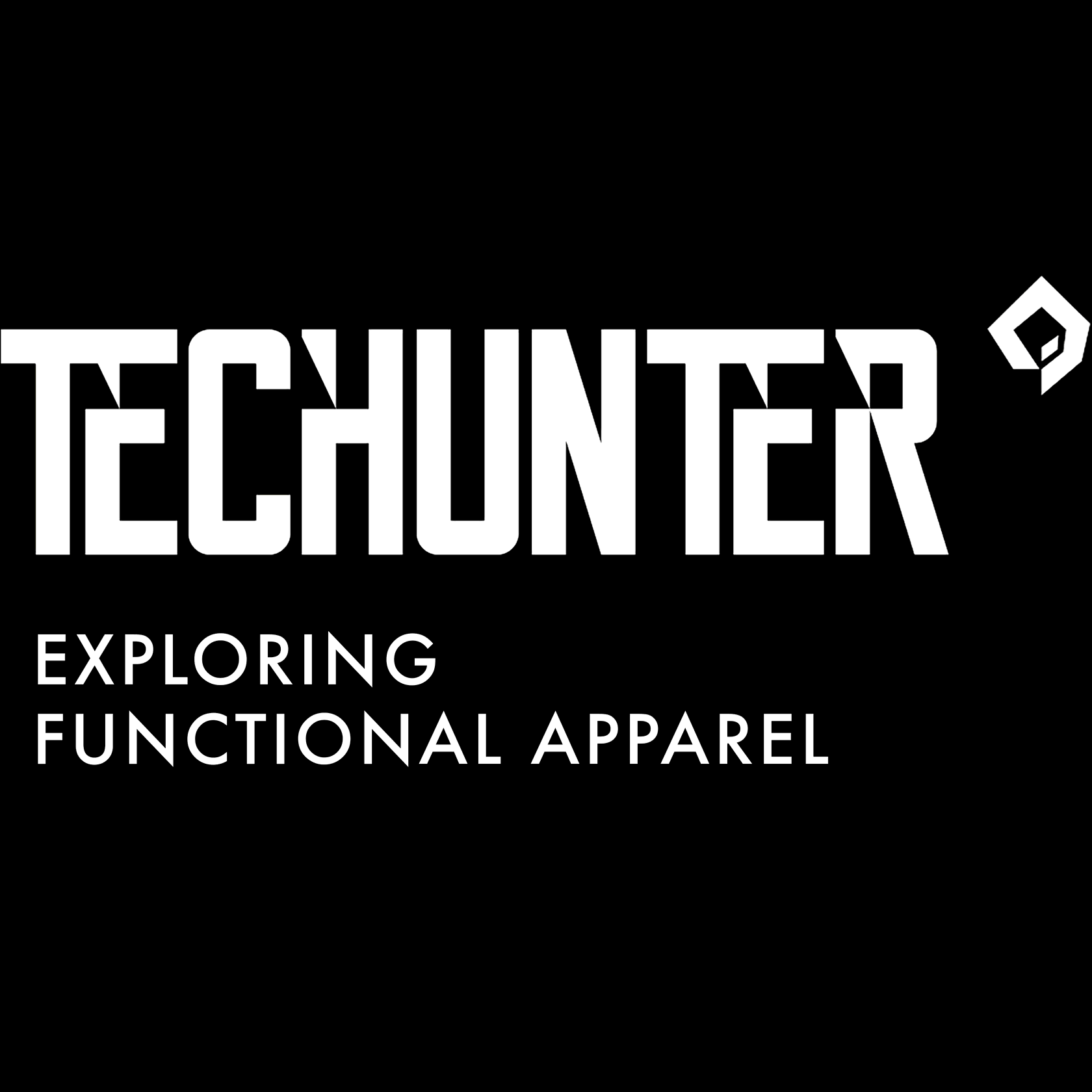
Wearing tomorrow –
Meta 70 project
[Overview]
Meta 70 project
[Overview]
The clothing we see and consume everyday is created mostly in a very similar way, from the design stage, to production, to ending up in your closet – it is all a single never ending cycle that is decades old.
So many people are involved in every step of the process and the input of most of them is left unknown under the cover of secrecy. We mostly know the designer or a creative director from any given brand.
So many people are involved in every step of the process and the input of most of them is left unknown under the cover of secrecy. We mostly know the designer or a creative director from any given brand.
Our project was always fascinated by what is behind the curtain of the industry and what stories can be uncovered from the studio or factory floors. Throughout our journey we always found the true marvels of ingenuity and creativity among the unseen workers and participants of the system we all are integrated in.
Not everyone conforms to the given and there are many incredible breakthrough movements that are proposing and showcasing their visions for the more fair and open industry of tomorrow.
Technological progress, the benefit of true cooperation and openness are at the forefront of these movements, and today we would love to show you one.
Wearing tomorrow –
Meta 70 project
[Overview]
Meta 70 project
[Overview]
The clothing we see and consume everyday is created mostly in a very similar way, from the design stage, to production, to ending up in your closet – it is all a single never ending cycle that is decades old.
So many people are involved in every step of the process and the input of most of them is left unknown under the cover of secrecy. We mostly know the designer or a creative director from any given brand. Our project was always fascinated by what is behind the curtain of the industry and what stories can be uncovered from the studio or factory floors. Throughout our journey we always found the true marvels of ingenuity and creativity among the unseen workers and participants of the system we all are integrated in.
Not everyone conforms to the given and there are many incredible breakthrough movements that are proposing and showcasing their visions for the more fair and open industry of tomorrow. Technological progress, the benefit of true cooperation and openness are at the forefront of these movements, and today we would love to show you one.
Not everyone conforms to the given and there are many incredible breakthrough movements that are proposing and showcasing their visions for the more fair and open industry of tomorrow. Technological progress, the benefit of true cooperation and openness are at the forefront of these movements, and today we would love to show you one.
Introducing Meta 70
In the spirit of the theme at hand, we would love to credit everyone involved first:
- Rickard Lindqvist, PHD– Manufacturing –
Creative Director and Founder of [a]industri, Author of the Kinetic Garment Construction system, and Steward of the Open Source Pattern Protocol. - Hugh Clarke– Patternmaking –
Founder of The Structure of Magic, former Senior Designer at PUMA, Contributor to the Open Source Pattern Programme. - Wes C / Weseeclearly– Creative Comms –
Artist & Advisor, Creative Director of BNV, core team MetaFactory, Author of WSC.FYI. - Daniel Mohr– Print Design –
Fashion Designer & Artist. - Maryam Mazraei– Protocol + Fashion NFT marketplace – Co-Steward at Signature Capsules, signaturecapsules.xyz.
- Eiman Soliman– Protocol + Fashion NFT marketplace – Co-Steward at Signature Capsules, signaturecapsules.xyz.
- Sanders– Fabric Sourcing and Printing –
CEO House of U. - Jin– Metaverse Builder –
Artist & Advisor, Steward of M3, core team MetaFactory. - Fraemwerk– VFX –
CGI Artist. - KONG.LAND– DAO –
Provider of HaLo chips for physical-blockchain link. - MetaFactory– DAO –
Community-owned and operated brand factory.
The term Meta has been butchered nearly as much as the term techwear in recent years, so let's try fixing this today. Meta 70 is a cooperative project of the fashion industry's true avangarde: the range of people involved is fascinating on its own. The project's goal is to propose a solution for a working system based on giving the power to all participants throughout the supply chain of clothing production and making them see and take credit for their input on a fair basis. To make it more tangible, they created a jacket and pant set with the use of all of their ideas and solutions. The end result is a working digiphysical product, based around a Swiss military uniform from the 70-s, hence the name. We will get into the details of how it came about a bit later, hang tight.
People who purchased the jacket received a physical keychain containing a HaLo chip (cold-storage wallet with browser-based NFC readability made by KONG). Attached to a garment, the wallet is what makes real digiphysical interactions possible beyond just a QR-code. The team is set to stream new content over to the NFC tags, developing and updating the functionality of this feature.
To best preserve the essence of the project's overall, we asked Wes C, for his expertise and overview.
To best preserve the essence of the project's overall, we asked Wes C, for his expertise and overview.

MF70 Anti-Surveillance Suit
TL;DR — The MF70 Anti-Surveillance Suit brings physical forkability, hypercollaboration, and integrated digital provenance to garment creation and distribution.
Meta Mesh
Fashion is a mostly vertical based system: monolithic companies that read each other competitively and write themselves redundantly. We believe it would thrive as a horizontal collaborative and open system.
This kind of root revitalization requires rebalancing across design, material sourcing, manufacturing, distribution, and communication. The MF70 Anti-Surveillance Suit is, yes, a jacket and pants set, and also an informed proposal for this horizontal system.
This kind of root revitalization requires rebalancing across design, material sourcing, manufacturing, distribution, and communication. The MF70 Anti-Surveillance Suit is, yes, a jacket and pants set, and also an informed proposal for this horizontal system.
Incentivized Hypercollaboration
Behind every garment ever produced is a mouthful of collaborators that go unmentioned and undercompensated. Forced contributions stripped of identity produce lackluster products. We believe that a transparent, co-creative, and empowered supply chain will provide value for everyone involved.
Each pair of hands and eyes that interacts meaningfully with MF70 makes a permanent impression through on-chain signatures. No ad strategy could match this multiplicity. With MF70 every contributor, from the manufacturer to the synchronistic reader peaks in, and into, a constantly evolving narrative graph.
Each pair of hands and eyes that interacts meaningfully with MF70 makes a permanent impression through on-chain signatures. No ad strategy could match this multiplicity. With MF70 every contributor, from the manufacturer to the synchronistic reader peaks in, and into, a constantly evolving narrative graph.

Open Building
MF70 is for remixing. Our tools are specifically built for this: the garment pattern has already been released on CLO3d's community marketplace as a free, downloadable file (through OSPP), and the Signature Collections protocol has a native forking feature which maps provenance and radiates royalties accordingly.
Supply Chain Composability
Running presales to determine production volume is not new, though it's still niche. We need scalable infrastructure to scale industry adoption. Current efforts are largely bespoke and vertical, forming part of the solution, but not the entire picture. With MF70, in conjunction with [a]industri's OSPP, we are creating organizational and manufacturing standards for a composable supply chain.
For producers, this means minimums are still met through smart order collation;
for designers, it means access to production networks;
for retailers, it means;
1) holistic storytelling > manipulative advertising;
2) presale perks > deadstock discounts (value deterioration).
For producers, this means minimums are still met through smart order collation;
for designers, it means access to production networks;
for retailers, it means;
1) holistic storytelling > manipulative advertising;
2) presale perks > deadstock discounts (value deterioration).
Digital Utility
Each MF70 is paired with a HaLo chip to enable sophisticated, programmatic linking between digital and physical. The following use-cases illustrates some of its potential:
Soulbound:
Soulbound:
- Certificate of authenticity for collectable
- Point-of-sale on every object, connecting buyer to creator
- Bearer instruments, e.g. cash, gift cards
- One time NFT that can be claimed from a concert ticket
- POAP that you met someone from their business card
- Airdrop token from event organizer
- Access control to a coworking space
- Toy which can sign messages in virtual gameplay
Since creatives are not working in the vacuum most of the time and the collaborative work process is essential in the field of fashion, just like in any other, this project and the system proposed relies heavily on bringing this collaborative workflow to the surface, to be seen and interacted with by anyone and everyone.
We wanted to dig deeper inside the thought process of creatives behind the MF70 Suit and what this proposed system means to them.
Since creatives are not working in the vacuum most of the time and the collaborative work process is essential in the field of fashion, just like in any other, this project and the system proposed relies heavily on bringing this collaborative workflow to the surface, to be seen and interacted with by anyone and everyone.
We wanted to dig deeper inside the thought process of creatives behind the MF70 Suit and what this proposed system means to them.
Rickard Lindqvist
– Manufacturing –
Creative Director and Founder of [a]industri,
Author of the Kinetic Garment Construction system,
and Steward of the Open Source Pattern Protocol.
Creative Director and Founder of [a]industri,
Author of the Kinetic Garment Construction system,
and Steward of the Open Source Pattern Protocol.
We have been seeing the development of information sharing spheres, like the media industry that is highly digitalized, with curated information and interactivity a lot, but the fashion and clothing production industries remained highly closed off and secretive of their work. With my earlier project – Atacac, and the idea to share brand patterns, it was in general a counter movement to the industry.
Everyone wants to create a sacred image of their brand, even though technically everyone is using the same base ideas and patterns to create their clothes. My thoughts were why not do it the other way around. There is a huge need for a curated selection of production ready patterns. If we have this around, it would work as a catalyst for a better design, decentralisation of processes and betterment of production.
By now we have managed to, using our platform, to create the biggest library of production ready patterns that are open to the public.
In the long run it might change how we perceive a fashion brand, or even change what a brand is. It might not seem realistic right now, but if we take the music industry as an example, the rise of platforms and direct sharing by artists opened up so many new possibilities and showed the world so many new creatives. There are still music labels around, of course, but there are other ways to share your work in the music industry.
Everyone wants to create a sacred image of their brand, even though technically everyone is using the same base ideas and patterns to create their clothes. My thoughts were why not do it the other way around. There is a huge need for a curated selection of production ready patterns. If we have this around, it would work as a catalyst for a better design, decentralisation of processes and betterment of production.
By now we have managed to, using our platform, to create the biggest library of production ready patterns that are open to the public.
In the long run it might change how we perceive a fashion brand, or even change what a brand is. It might not seem realistic right now, but if we take the music industry as an example, the rise of platforms and direct sharing by artists opened up so many new possibilities and showed the world so many new creatives. There are still music labels around, of course, but there are other ways to share your work in the music industry.
We want to see what happens to ours, if more useful information is available to everyone for free.
From a technology perspective, if we can verify what is production ready before the pattern is sent out, it allows the factory to do smoother operations and not waste money, time and resources redoing or fixing mistakes after the fact during production.
For retailers it gives them an ability to know what garment they will be able to sell in advance. It essentially allows you to verify with a set of instruments that you can run on a pattern to guarantee that a garment is manufacturable.
At a fairly early stage of Atacac we wanted to push the industry with a certain set of tools, and we thought giving those instruments away would help all of us. We were offering our patterns as downloadables via shopify, and also getting email addresses as a result to spread our thoughts, so it was a double win.
In academia you publish scientific research, with the idea of someone else being able to develop further on the basis of your work and perhaps achieve better results. Why not do that in fashion? We stand on the shoulders of giants, why would you waste time doing everything from ground zero. Sharing could lead to greater results than competition in my opinion.
From a technology perspective, if we can verify what is production ready before the pattern is sent out, it allows the factory to do smoother operations and not waste money, time and resources redoing or fixing mistakes after the fact during production.
For retailers it gives them an ability to know what garment they will be able to sell in advance. It essentially allows you to verify with a set of instruments that you can run on a pattern to guarantee that a garment is manufacturable.
At a fairly early stage of Atacac we wanted to push the industry with a certain set of tools, and we thought giving those instruments away would help all of us. We were offering our patterns as downloadables via shopify, and also getting email addresses as a result to spread our thoughts, so it was a double win.
In academia you publish scientific research, with the idea of someone else being able to develop further on the basis of your work and perhaps achieve better results. Why not do that in fashion? We stand on the shoulders of giants, why would you waste time doing everything from ground zero. Sharing could lead to greater results than competition in my opinion.
Eiman Soliman & Maryam Mazraei
– Protocol + Fashion NFT marketplace – Co-Steward at Signature Capsules, signaturecapsules.xyz
&
– Protocol + Fashion NFT marketplace – Co-Steward at Signature Capsules, signaturecapsules.xyz.
&
– Protocol + Fashion NFT marketplace – Co-Steward at Signature Capsules, signaturecapsules.xyz.
It is the same kind of approach that we have been going through with designers around open source fashion, how the process turns into essentially composing elements with pre existing specifications into a cohesive narrative through collaborative work. There is a pushback, naturally, from some due to fears of losing ownership of their part of work or their ideas.
To soften this pushback we can add a digital signature to any work, that allows users to track authorship through the steps of collaborative work and keep an understanding of those creative IPs. On the example of the Meta 70 we can invite authors to revise the existing spec of a jacket and add their signatures to a design.
To soften this pushback we can add a digital signature to any work, that allows users to track authorship through the steps of collaborative work and keep an understanding of those creative IPs. On the example of the Meta 70 we can invite authors to revise the existing spec of a jacket and add their signatures to a design.
This can drive a community approach to creation of garments and elevate the participation of different creatives, doing things together with their input being protected and signed via technology.
We thought about this in terms of something being production ready. We talk to brands that have low minimums and work on a made to order basis. To allow coordination and have access to their supply in time, they can benefit a lot by knowing when something is production ready, as Rickard said before.
All of it enables multiple actors to be connected in the supply chain and streamlines all of the processes as a result.
We thought about this in terms of something being production ready. We talk to brands that have low minimums and work on a made to order basis. To allow coordination and have access to their supply in time, they can benefit a lot by knowing when something is production ready, as Rickard said before.
All of it enables multiple actors to be connected in the supply chain and streamlines all of the processes as a result.
Wes C
– Creative Comms –
Artist & Advisor, Creative Director of BNV, core team MetaFactory, Author of WSC.FYI.
Artist & Advisor, Creative Director of BNV, core team MetaFactory, Author of WSC.FYI.
Metafactory came into the project as a possible solution for distribution. As a creator, the motivation to share is also fed by the visibility of how your creations have been iterated upon or used. I felt like I have never seen something like what Rickard was doing with his Atacac project. It is one thing to share base patterns, which tend to be almost the same between all brands, but his system was about sharing research and complicated and delicate pattern ideas.
Moving away from brand management into a more open way of creativity is something I feel is inevitable.
This moment is coming for fashion. Things like presaling has become something many brands tried during the pandemic to get the sense of interest in an upcoming product, and working with microfactories locally is something that can protect from a supply chain shortage, as we have seen in 2020 and 2021.
Moving away from brand management into a more open way of creativity is something I feel is inevitable.
This moment is coming for fashion. Things like presaling has become something many brands tried during the pandemic to get the sense of interest in an upcoming product, and working with microfactories locally is something that can protect from a supply chain shortage, as we have seen in 2020 and 2021.
There is so much about creativity to explore. It is a hard thing to pin down in words, but I feel like we are at a point where more artists are looking to tech for the culture of it and the culture of sharing, and it is inevitable that the two will merge together.
Your stylistic treatment of anything is an agglomeration of different preexisting styles anyway. If all brands would share the same hardware in the patterns and put new treatment layers on top, we all would be better off.
In a traditional way we can't see into the fundamentals of work. There is a need to open up the process and highlight all of the different parts that come together to create a garment. Maybe one day we can give that pyramid of recognition and money going to a creative director or the brand itself and see how we can make others, like a garment designer, the manufacturer, material sourcer, take part of the credit, it can lead to more innovation in the broader industry.
Your stylistic treatment of anything is an agglomeration of different preexisting styles anyway. If all brands would share the same hardware in the patterns and put new treatment layers on top, we all would be better off.
In a traditional way we can't see into the fundamentals of work. There is a need to open up the process and highlight all of the different parts that come together to create a garment. Maybe one day we can give that pyramid of recognition and money going to a creative director or the brand itself and see how we can make others, like a garment designer, the manufacturer, material sourcer, take part of the credit, it can lead to more innovation in the broader industry.
Hugh Clarke
– Patternmaking –
Founder of The Structure of Magic, former Senior Designer at PUMA, Contributor to the Open Source Pattern Programme.
Founder of The Structure of Magic, former Senior Designer at PUMA, Contributor to the Open Source Pattern Programme.
From a creative perspective, it was always hard to get access to great patterns. I came to realise that I have to create my own. I started to deconstruct old patterns to use as NFTs in a digital space. Military fashion was the first step, of which I now have a library of patterns I can use for art or in my own brand.
The idea is to have this library be available for a consumer to choose from, thus giving him the opportunity to participate in the design process, decentralizing the design process essentially. Earlier this year we invited 5 artists to redo the MF70 project using those patterns we had. They come back with incredible variations on it.
Daniel Mohr
– Print Design –
Fashion Designer & Artist.
Fashion Designer & Artist.
Trying to bridge the physical and digital spaces we wanted to try to create a camo pattern that would confuse camera surveillance systems. The problem with this topic is that there are so many different systems nowadays that you can't realistically create something singular to confuse all of them. Our pattern confuses those systems, but it is not a foolproof solution, yet. The Swiss military 70-s jacket that Hugh and Rickard were digitising has a very bold pattern. This gave me a thought of switching the concept completely around and having a camouflage make you extremely visible in the physical world.
I feel that the system proposed creates a new workflow, meaningfully integrating existing software into the process, creating the future of collaborative work. I don't, so far, believe in digital only products, but a shift is coming. Hybrid products, like the MF70 having a physical product connected to a digital item/twin of itself, are creating the new basis for future brands and projects.
I feel that the system proposed creates a new workflow, meaningfully integrating existing software into the process, creating the future of collaborative work. I don't, so far, believe in digital only products, but a shift is coming. Hybrid products, like the MF70 having a physical product connected to a digital item/twin of itself, are creating the new basis for future brands and projects.
NFTs don't have to be just small pictures you collect, but they can be contracts or patterns of clothing for the future. There are 2 movements today: speed up production, cut costs and get more money and in opposition to be slow and thoughtful, be more artisanal in your approach.
Technology and software can bridge this gap, connected best of 2 worlds.
The main thing for me to be excited about in all of this is to become more connected to each other, not like in the traditional fashion system where everyone is working against one another keeping everything behind closed doors, and to the customer, to create better clothing and spend more time working on the quality of clothing, selecting not the faster workable solution, but the better one.
Technology and software can bridge this gap, connected best of 2 worlds.
The main thing for me to be excited about in all of this is to become more connected to each other, not like in the traditional fashion system where everyone is working against one another keeping everything behind closed doors, and to the customer, to create better clothing and spend more time working on the quality of clothing, selecting not the faster workable solution, but the better one.
Fashion's multiplayer mode – Signature Capsules powered by Crowdmuse.
Signature Capsules is the on-chain infrastructure for fashion creators. Each capsule drop splits revenue transparently to all product contributors and creators, enabling growth through shared ownership of the brand.
Digi-physical fashion NFTs on the Capsules marketplace unlock community access and ownership in brands that mirror their identity. And making it easy for designers to co-create with brands, manufacturers and communities.
Working with collaborators to create fewer, high-quality products uniquely designed for and by the members.
As a consumer and curator of fashion, you can invest in the products the community co-creates through the Capsule collections.
Digi-physical fashion NFTs on the Capsules marketplace unlock community access and ownership in brands that mirror their identity. And making it easy for designers to co-create with brands, manufacturers and communities.
Working with collaborators to create fewer, high-quality products uniquely designed for and by the members.
As a consumer and curator of fashion, you can invest in the products the community co-creates through the Capsule collections.
As a creator of fashion, you can collaborate with brands, suppliers and producers to launch your own signature capsule, and receive royalties as your contributions are licensed on the Signature Capsules marketplace.
No matter if you are a fashion adept, creative looking for the next step or simply want to support this evolution of the creator economy, you can sign the open letter on https://www.signaturecapsules.xyz/.
Your wallet/web3 identity marks your Capsules membership, whitelisting you for future drops.
Signature Capsules Genesis Drop with MetaFactory and Collaborators available on 12.21.22. Featuring the MF70 Anti-Surveillance Set on the Capsules marketplace.
No matter if you are a fashion adept, creative looking for the next step or simply want to support this evolution of the creator economy, you can sign the open letter on https://www.signaturecapsules.xyz/.
Your wallet/web3 identity marks your Capsules membership, whitelisting you for future drops.
Signature Capsules Genesis Drop with MetaFactory and Collaborators available on 12.21.22. Featuring the MF70 Anti-Surveillance Set on the Capsules marketplace.


Technology and the way we use it opens possibilities in the functional and overall clothing industries to create better and smarter products. Clothing of today is making steps to enter the interconnected web of possibilities of tomorrow.
We hope we have made the topic a bit more close to home for you and maybe uncovered something new and exciting about our industry. We are planning on focusing more on technology and solutions in our industry and making this a new series, so we would love to hear your opinion on the matter, what names and projects are you most interested in to learn more about. Leave your thoughts about it in the comments on our social media and via DMs. Make sure to check out our partners and project's participants and their work via the links in the article.
After that, check out our related materials via the links below.
We hope we have made the topic a bit more close to home for you and maybe uncovered something new and exciting about our industry. We are planning on focusing more on technology and solutions in our industry and making this a new series, so we would love to hear your opinion on the matter, what names and projects are you most interested in to learn more about. Leave your thoughts about it in the comments on our social media and via DMs. Make sure to check out our partners and project's participants and their work via the links in the article.
After that, check out our related materials via the links below.
Words: Ivan Dzhatiev [TECHUNTER, creative director].
Commentary: Weseeclearly [Artist & Advisor, Creative Director of BNV, core team MetaFactory, Author of WSC.FYI], Rickard Lindqvist [PHD, Creative Director and Founder of [a]industri, Author of the Kinetic Garment Construction system, and Steward of the Open Source Pattern Protocol], Hugh Clarke [Founder of The Structure of Magic, former Senior Designer at PUMA, Contributor to the Open Source Pattern Programme], Maryam Mazraei [Co-Steward at Signature Capsules, signaturecapsules.xyz], Eiman Soliman [Co-Steward at Signature Capsules, signaturecapsules.xyz], Daniel Mohr [Fashion Designer & Artist].
Edit: Ivan Dzhatiev [THM]
Assets: Weseeclearly, Hugh Clarke, Daniel Mohr, Jin, [a]industri, MetaFactory.
Layout: Alex Zabelin [THM].
Commentary: Weseeclearly [Artist & Advisor, Creative Director of BNV, core team MetaFactory, Author of WSC.FYI], Rickard Lindqvist [PHD, Creative Director and Founder of [a]industri, Author of the Kinetic Garment Construction system, and Steward of the Open Source Pattern Protocol], Hugh Clarke [Founder of The Structure of Magic, former Senior Designer at PUMA, Contributor to the Open Source Pattern Programme], Maryam Mazraei [Co-Steward at Signature Capsules, signaturecapsules.xyz], Eiman Soliman [Co-Steward at Signature Capsules, signaturecapsules.xyz], Daniel Mohr [Fashion Designer & Artist].
Edit: Ivan Dzhatiev [THM]
Assets: Weseeclearly, Hugh Clarke, Daniel Mohr, Jin, [a]industri, MetaFactory.
Layout: Alex Zabelin [THM].



